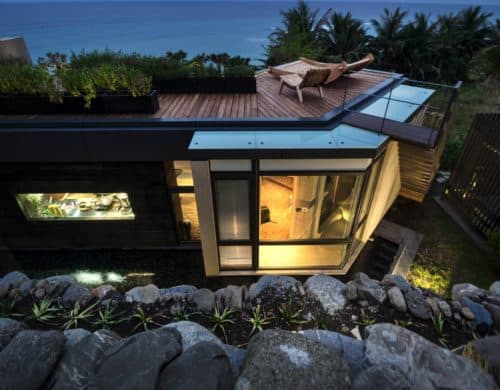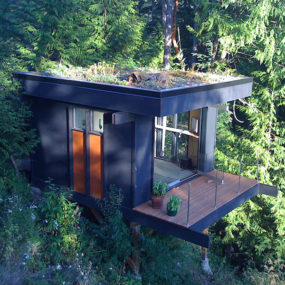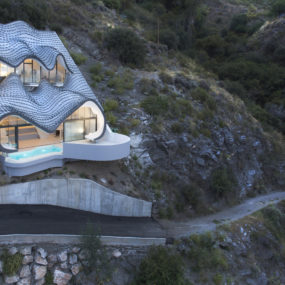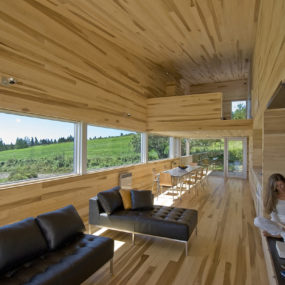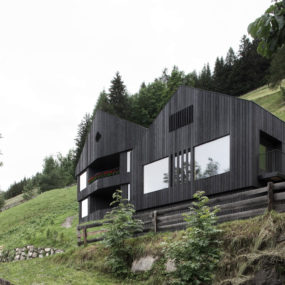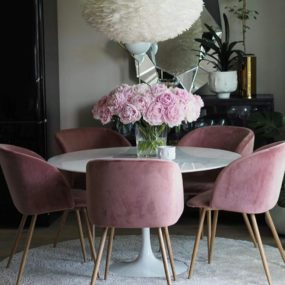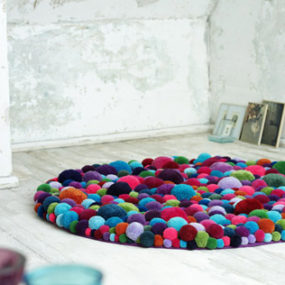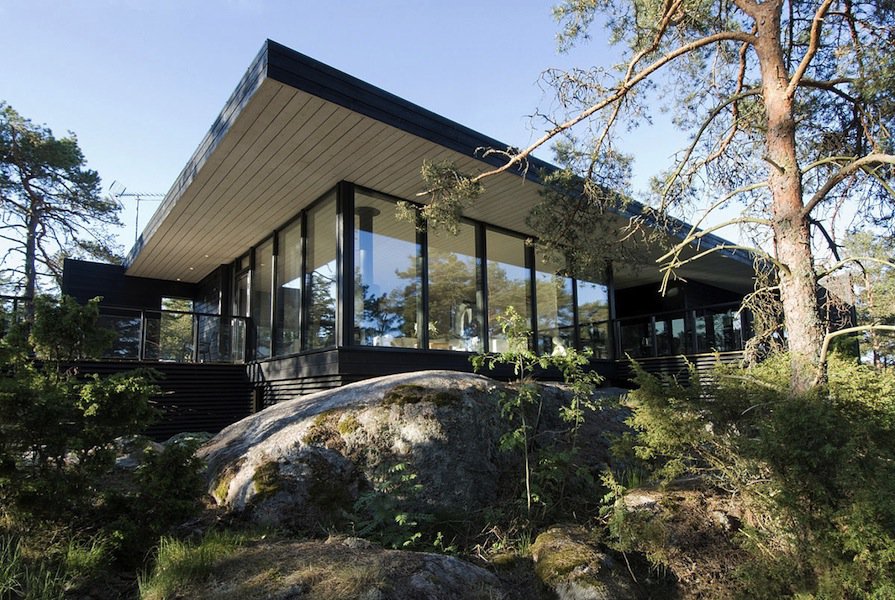
Built in a sparsely populated woodland region of Finland, this summer home by Haroma and Partners Architects creates a comfortably contemporary place to stay while honoring the woodlands at the same time. Built on the crest of a rocky hillside overlooking a waterway far below, the construction of the cabin took great care to preserve the landscape around it, with a floorplan that reflects the preservation of many natural features in its vicinity. Instead of clear-cutting and flattening a piece of property, the architects instead made small alterations to the design wherever it coincided a natural element, creating interaction with nature instead of conflict. Both inside and out, the house is dominated by painted wood surfaces, emphasizing the natural origins of the design and fitting its geometric architecture comfortably into the woods. This connection is further enhanced by the placement of a number of key common spaces outside, exposing daily activities to the open air. Though the decor and shape of the house are unmistakably modern, the architects did an admirable job of integrating those contemporary cues into a rustic environment.
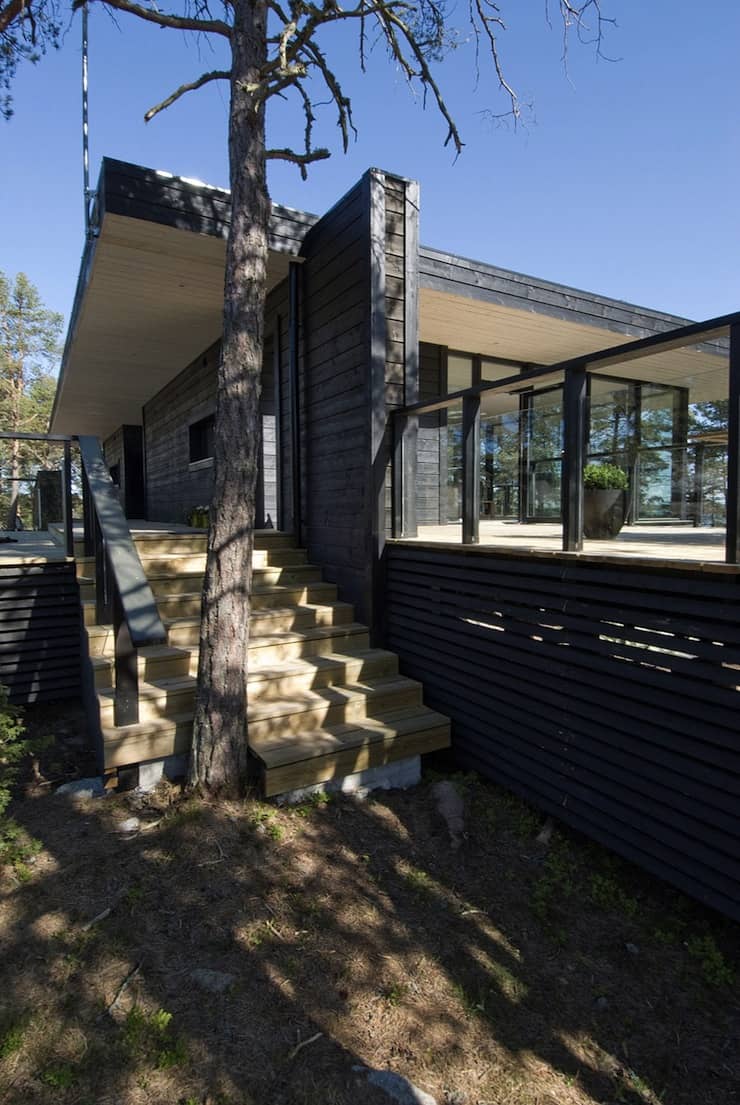
The construction of the house is extremely sensitive to its woodland surroundings, with a shape dictated by a desire to clear as few of the surrounding trees as possible. Details of the architecture, such as this cutout in the corner of the entry stairs, further demonstrate the architect’s and homeowners’ dedication to preserving the pristine wilderness around the structure.
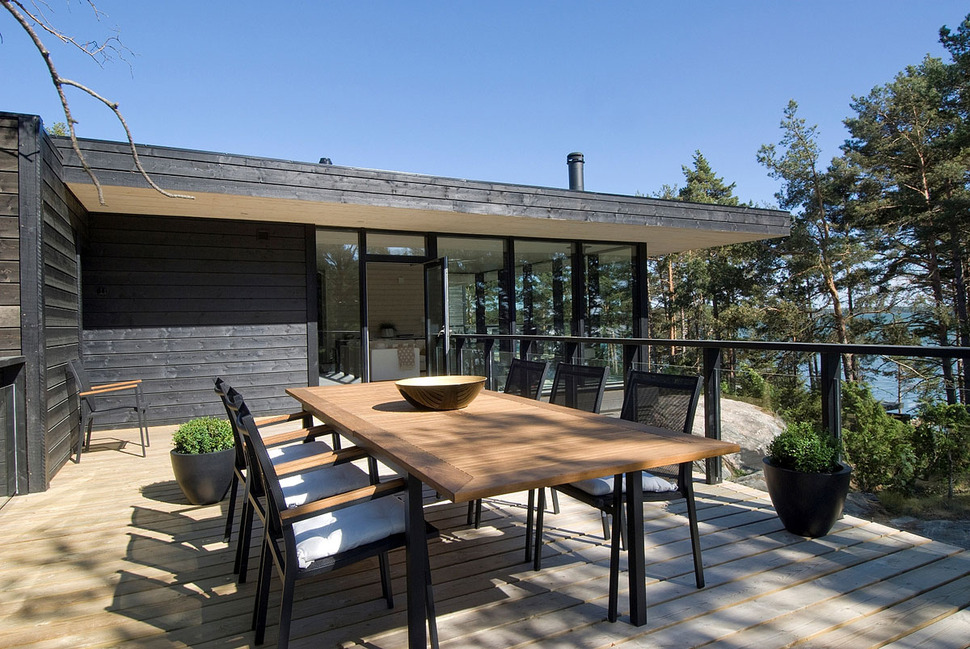
With such an impressively unblemished location, the house is focused almost entirely on the outdoors, with many of its rooms set on open decks instead of within its walls. Since the dwelling is a warm-weather vacation house, these spaces need not be livable during cold, wet times, getting rid of many of the limits facing traditional residential architecture.
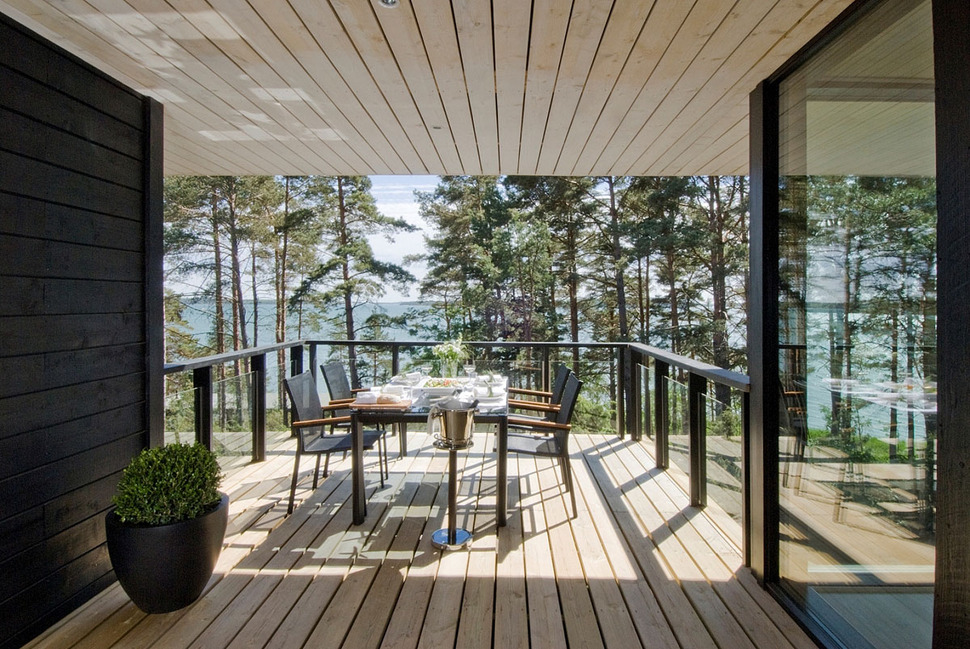
The hefty overhang of the residence’s roof creates covered deck portions along room edges and within nooks tucked into its design, allowing somebody to move from the front to the rear of the house during a drizzle without getting the least bit wet. This overhang also plays a key role in keeping the interior cool, blocking the sun’s rays at the height of the day.
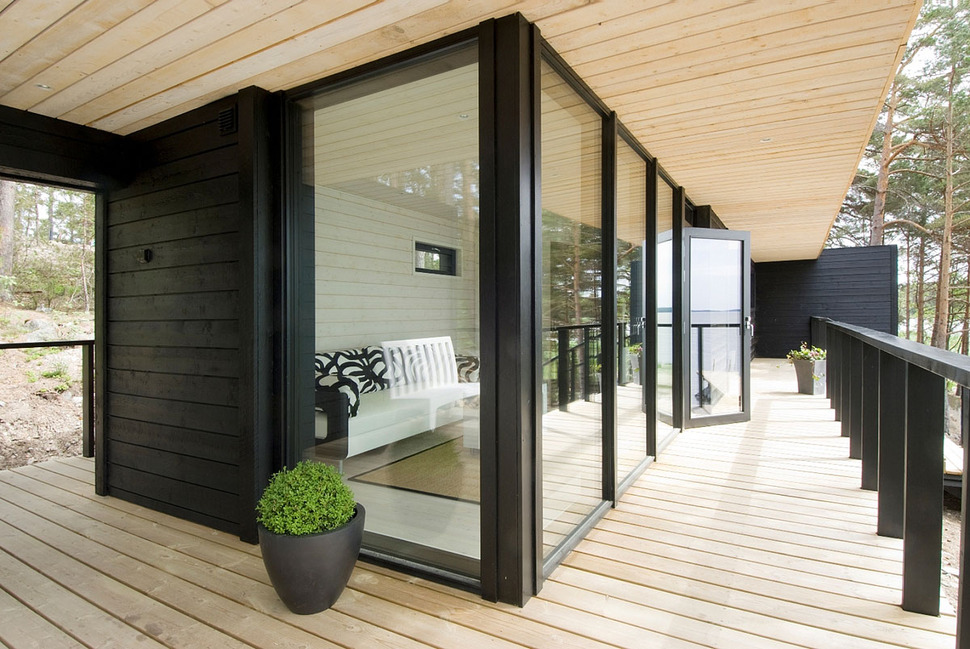
Narrow rooms along the front deck overlook the waters far below, with furnishings placed facing the tall window panels which make up the hillside facade of the cabin.
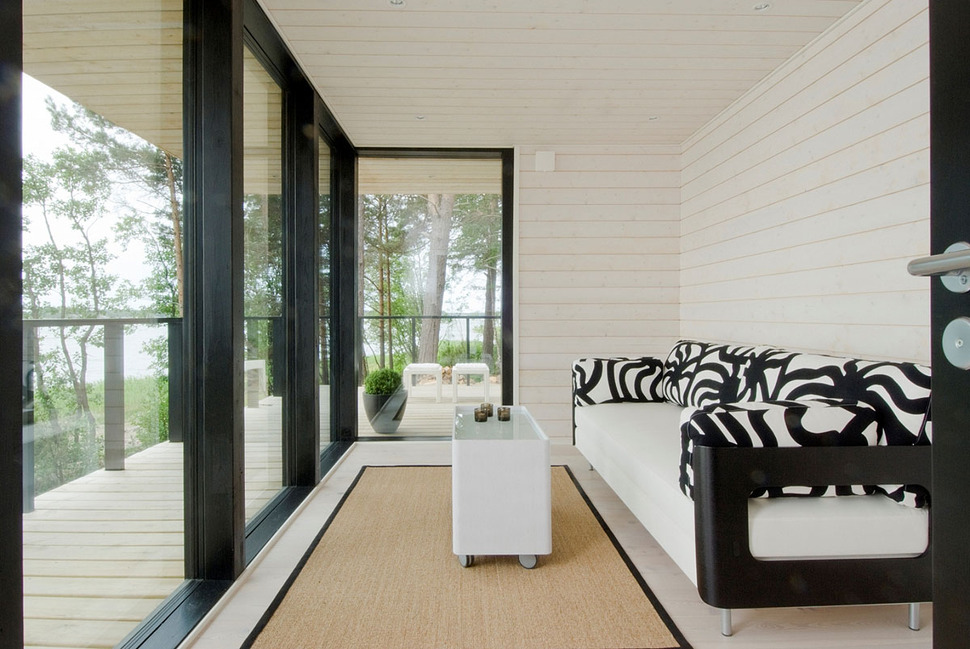
Inside, wood construction dominates every major room of the vacation home giving an authentic rustic feel to the contemporary elements of the interior. The home is a true wooden construction, but the decor of the interior and white paint on the walls help instill a modern feel.
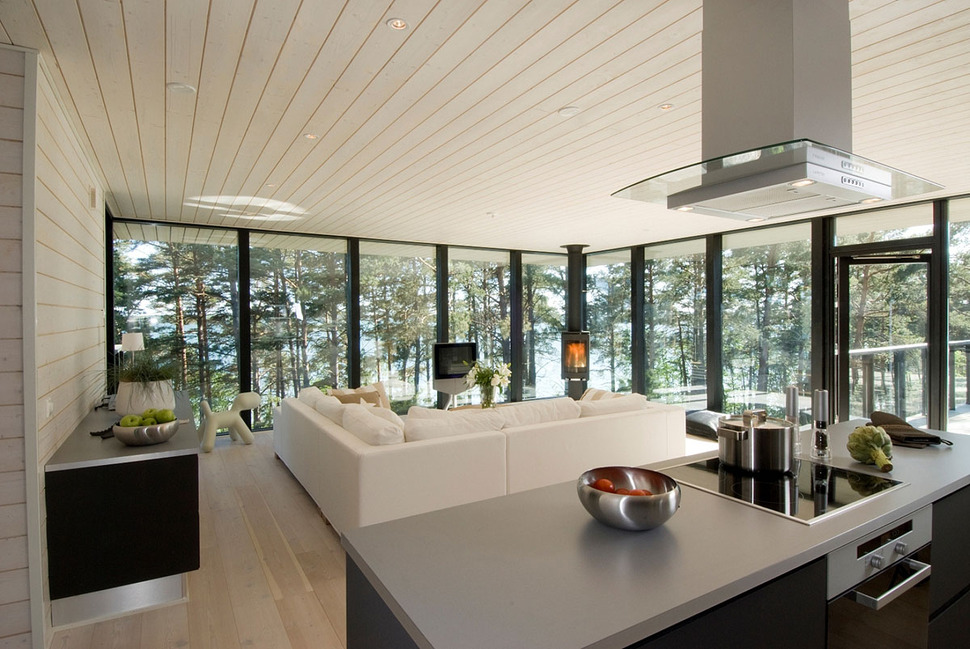
The chief indoor social space of the abode is this open kitchen and living room, the warmest and widest room in the building. This room also appears to be the most professional and “finished”, with in-ceiling lighting and built-in metal kitchen and living room amenities.
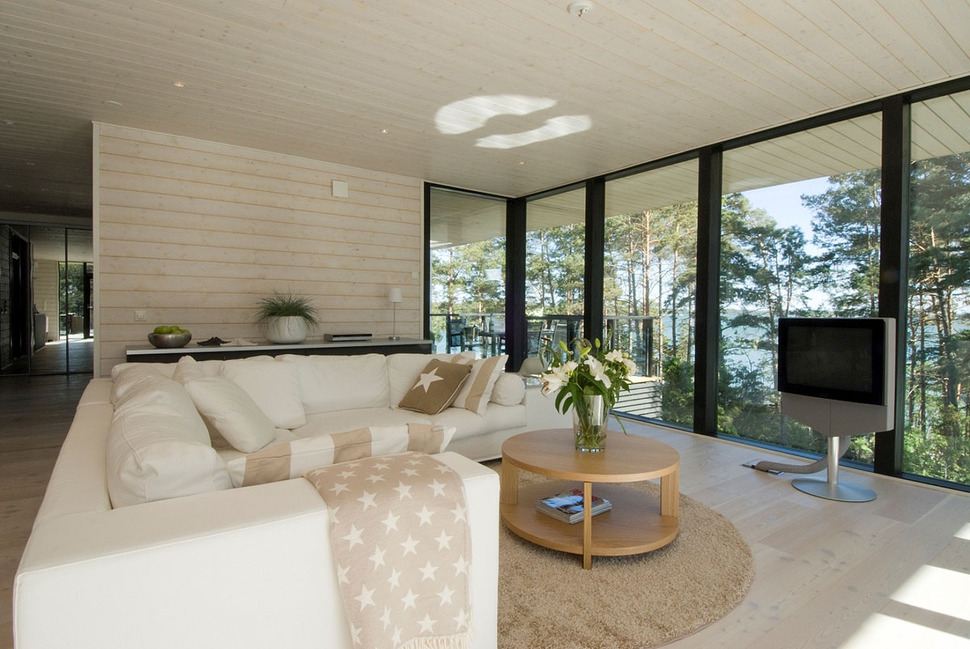
At the front of the living area, the architects chose to forgo adding another deck section in favor of a completely unobstructed downhill view. The outdoor dining area is still just a short walk from the kitchen, to one side.
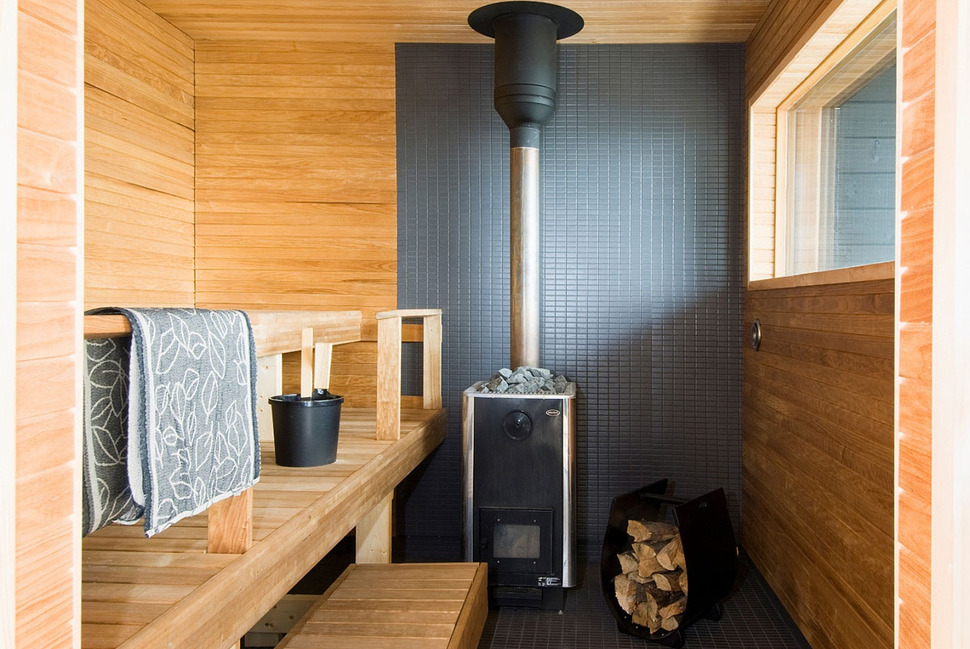
The most natural and traditional of all the rooms inside is the sauna, which features unpainted wood walls and only a single thin window looking out into the forest.
Haroma & Partners Architects
